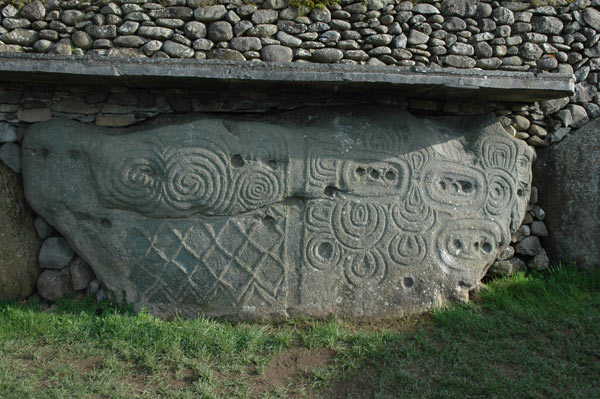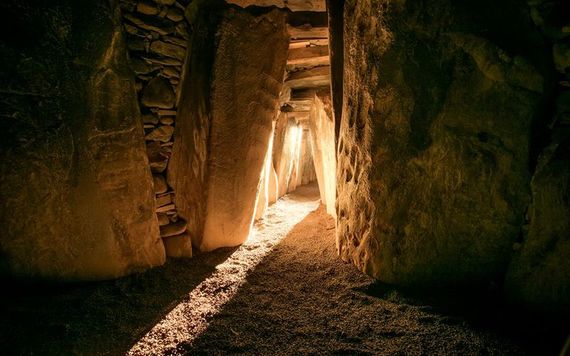This week, I explored the Neolithic tomb and religious site of Newgrange. One of the things which struck me initially was how seamlessly the structure blends into the surrounding environment. From a distance, it looks like nothing more than a hill. However, a closer look reveals how remarkable and mysterious this strange building is. Outside the main entrance, immense boulders carved with spiral patterns inspire many questions. Who erected these stones? How could anyone have possibly managed this impossible feat at such an early point in history? Passing through the entrance, a long tunnel leads to an inner chamber which contains three large alcoves and more spiral images. On the winter solstice, a shaft of light from the rising sun reaches all the way back into the furthest recesses of this space, which reveals the precise knowledge of astronomy and engineering which the builders of Newgrange undoubtedly possessed. Other than the fact that it served as a tomb and religious site, very little is known about Newgrange or the people who constructed it.

As I explored this structure whose history and meaning has vanished almost entirely over the course of time, I was reminded of Eavan Boland’s poem, “That the Science of Cartography is Limited.” The famine roads in this poem are fascinating landmarks which—like Newgrange—evoke many questions. These roads leading to nowhere require explanation; the roads themselves do nothing to clarify why they were built and why they meander so purposelessly across the most remote areas of the Irish countryside. It is only through historical recollection that we are able to understand why they exist at all. However, the history of Newgrange which might reveal its secrets has long been forgotten and so we are only left with our questions. I wonder if people might look at those famine roads at some point in the future—if and when that history is forgotten—and feel the same sense of mystery which we encounter when we visit Newgrange.

